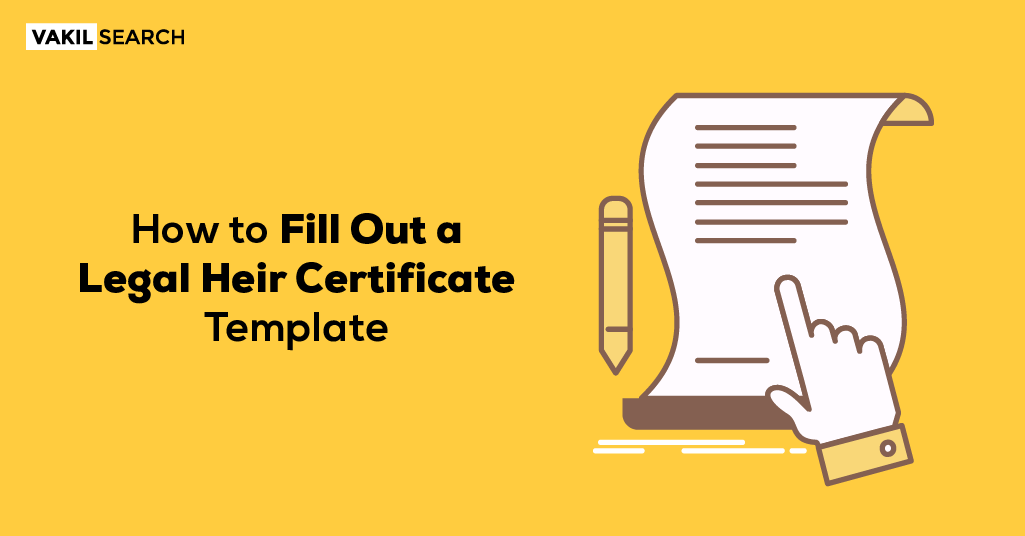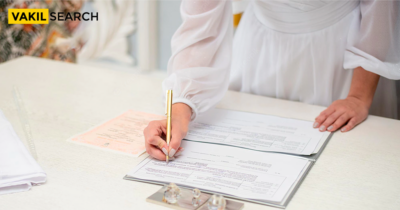Learn how to complete a Legal Heir Certificate Template step-by-step. Essential guide, ensuring accuracy and clarity in the process for legal heirs.
Introduction
When a loved one passes away, navigating through legal processes can be emotionally challenging. One important document that often becomes necessary in such situations is the Legal Heir Certificate. This certificate establishes the rightful heirs to the deceased’s assets and liabilities. To streamline the process, many jurisdictions provide Legal Heir Certificate templates. In this comprehensive guide, we will walk you through the step-by-step process of filling out a Legal Heir Certificate Template, offering clarity on the required information and ensuring a smooth application.
Understanding the Purpose of a Legal Heir Certificate
Before delving into the details of filling out the template, it’s essential to understand the purpose of a Legal Heir Certificate. This document serves as legal proof of the heirs’ relationship with the deceased person and their entitlement to inherit the deceased’s assets. It is often required during the settlement of the deceased person’s estate, property transfer, or claiming benefits such as insurance.
Gather Essential Information
Before starting to fill out the Legal Heir Certificate template, gather all the necessary information. This typically includes details about the deceased person, such as their full name, date of birth, date of death, and any relevant identification numbers. Additionally, you’ll need information about the legal heirs, including their names, addresses, relationship to the deceased, and supporting identification documents.
Obtain the Legal Heir Certificate Template
Legal Heir Certificate templates are usually available from government or municipal offices, and sometimes online. You can request a copy from the relevant authorities or download it from official websites. Ensure that you are using the most recent and authorised version of the template to avoid any discrepancies.
Section 1: Personal Information of the Deceased
The first section of the template is dedicated to capturing information about the deceased person. Carefully fill in the following details:
- Full Name: Provide the complete name of the deceased person, including any middle names or initials.
- Date of Birth: Enter the date of birth of the deceased person.
- Date of Death: Specify the date on which the person passed away.
- Place of Death: Indicate the location (city or hospital) where the death occurred.
- Residential Address: Mention the last residential address of the deceased person.
- Identification Details: Include any identification numbers or details relevant to the deceased, such as Aadhar card number, passport number, or Social Security number.
Section 2: Details of Legal Heirs
This section focuses on capturing information about the legal heirs. List all the individuals who are entitled to inherit the deceased person’s assets. Provide the following details for each legal heir:
- Full Name: Enter the complete name of each legal heir.
- Relationship to the Deceased: Specify the relationship of each legal heir to the deceased person (e.g., spouse, child, sibling).
- Address: Provide the current residential address of each legal heir.
- Identification Details: Include relevant identification details for each legal heir, such as Aadhar card number, passport number, or Social Security number.
Section 3: Supporting Documents
Most Legal Heir Certificate templates require the submission of supporting documents to verify the information provided. These documents may include:
- Death Certificate: Attach a copy of the deceased person’s death certificate, issued by the relevant authorities.
- Relationship Proof: Include documents that establish the relationship between the legal heirs and the deceased, such as marriage certificates, birth certificates, or family registers.
- Identification Proof: Submit copies of identification documents for both the deceased and the legal heirs. This may include Aadhar cards, passports, or other government-issued IDs.
Section 4: Affidavit
Many Legal Heir Certificate templates require an affidavit affirming the accuracy of the information provided. The affidavit typically includes:
- Affiant’s Full Name: Provide the full name of the person making the affidavit.
- Relationship to the Deceased: Specify the relationship of the affiant to the deceased.
- Details of the Deceased: Confirm the details of the deceased person, including their full name and date of death.
- Affirmation of Accuracy: State that the information provided in the Legal Heir Certificate application is accurate and true to the best of the affiant’s knowledge.
- Notarisation: The affidavit may need to be notarised by a legal authority to add legal validity.
Section 5: Declaration and Signature
The final section of the template typically includes a declaration and space for signatures. Carefully review the information provided in the certificate and sign the document where required. The declaration may include a statement confirming that the legal heirs have disclosed all relevant information truthfully.
Submission of the Application
Once the Legal Heir Certificate template is filled out completely and accurately, submit the application along with all supporting documents to the designated authority. Ensure that you have made copies of all documents for your records.
Follow-Up and Verification
After submitting the application, it’s advisable to follow up with the relevant authority to check the status of your application. Authorities may conduct verification processes to ensure the accuracy of the information provided. Be prepared to respond to any queries or requests for additional information promptly.
Receiving the Legal Heir Certificate
Upon successful verification, you will receive the Legal Heir Certificate. This document holds legal validity and serves as proof of your status as a legal heir to the deceased person.
Retain Multiple Copies
Once you receive the Legal Heir Certificate, make multiple copies and keep them in a safe and accessible place. You may need these copies for various legal and administrative purposes, such as property transfer, financial transactions, or claiming benefits.
Conclusion
Filling out a Legal Heir Certificate template is a crucial step in the process of establishing legal heirs and their entitlement to the deceased person’s assets. By following this step-by-step guide, such as the comprehensive resources provided by Vakilsearch, you can navigate through the details efficiently, ensuring accuracy and completeness in your application. While the process may vary slightly depending on jurisdiction, the fundamental information and supporting documents required remain consistent. Remember to approach this task with patience and attention to detail, as the Legal Heir Certificate holds significant legal importance in matters of inheritance and asset distribution.
FAQs
What is the purpose of a Legal Heir Certificate?A Legal Heir Certificate establishes the rightful heirs to a deceased person’s assets and liabilities. It serves as crucial legal proof of the relationship between the heirs and the deceased, often required for estate settlement, property transfer, and insurance claims. |
Where can I obtain a Legal Heir Certificate template?Legal Heir Certificate templates are typically available from government offices, municipal authorities, or online platforms. You can request a copy from relevant authorities or download an authorised version from official websites to ensure accuracy and validity. |
What information is required for the deceased person in the template?The template requires comprehensive details about the deceased, including their full name, date of birth, date of death, place of death, last residential address, and relevant identification details such as Aadhar card, passport, or Social Security number. |
What supporting documents are needed for a Legal Heir Certificate application?Essential supporting documents include a copy of the deceased person’s death certificate, proof of the relationship between legal heirs and the deceased (marriage certificates, birth certificates), and identification proof for both the deceased and legal heirs (Aadhar cards, passports). |
Is notarisation required for the affidavit in the Legal Heir Certificate application?Yes, many templates require the affidavit affirming the accuracy of information to be notarised by a legal authority. Notarisation adds legal validity to the affidavit, ensuring that the provided information is accurate and truthful to the best of the affiant’s knowledge. |
Read More-










